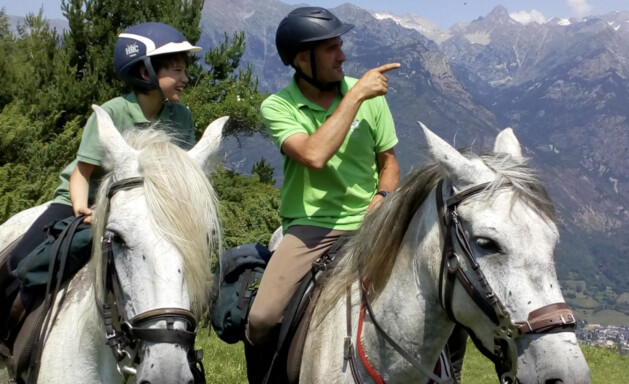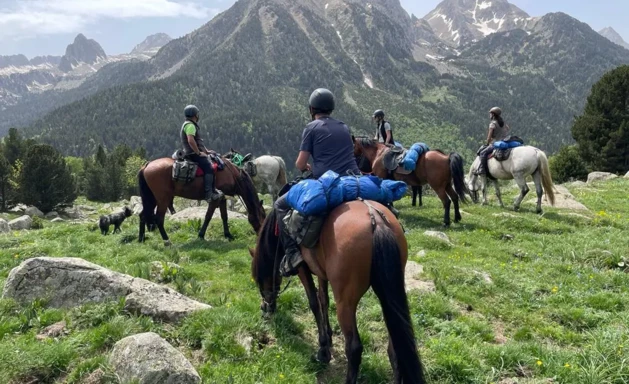Equipment for equestrian tourism in high mountain areas
We explain what are the basic and optional materials that you should include in your saddlebags to take an equestrian route.

However, while exploring the high mountains on horseback is an unforgettable experience, having the right equipment is essential to fully enjoy this activity. At Anima Equi, we explain the basic and optional gear you should bring on an introductory horseback riding ride or a guided multi-day adventure with a professional guide.
Recommended equipment for short rides
For short horseback riding rides, such as a ride lasting one or several hours, for adults or minors aged 14 and above, it is recommended to bring the following equipment:
- Closed-toe shoes. Avoid open shoes such as flip-flops or sandals.
- Socks.
- Leggings or long pants, preferably made of a material that does not wrinkle, as fewer wrinkles reduce the chance of chafing.
- Clothing adapted to weather conditions.
- Equestrian helmet. If you don't have one, we will provide one at Anima Equi.
If the ride involves ponies, children only need to wear long pants and closed-toe shoes. At Anima Equi, we provide the helmet.
What to bring on a horseback ride
If you decide to join a guided horseback riding ride, consider its duration. A six- to seven-hour daily riding adventure is not the same as a relaxed two-hour ride. If you are planning a long horseback journey, make sure your gear includes the following:
- Riding pants to prevent chafing and ensure comfort during the ride.
- Riding gaiters, also known as chaps or mini-chaps, which protect your legs and improve grip on the horse.
- Closed-toe footwear is essential. Hiking boots or safety boots that fit the gaiters provide good grip, especially on rough terrain.
- Equestrian helmet, a crucial safety element for any ride. If you don’t have one, we will provide one at Anima Equi.
- Sun and cold protection. Bring sunscreen and a neck gaiter or buff—both are essential in high-mountain environments.
- Warm and rainproof clothing. A sturdy jacket or anorak and a raincoat covering both torso and legs will protect you from sudden weather changes.
- Additional layers. Carry a sweater or sweatshirt, a long-sleeve shirt, and a thermal undershirt to regulate your body temperature based on the weather. In the mountains, layering is key to adapting to changing conditions.
- Comfortable underwear. Choose fabrics that prevent irritation.
- Water container. Staying hydrated is crucial during long horseback rides, so bring a canteen, a thermos, or a reusable plastic bottle.

Optional equipment for an equestrian ride
Whether you are embarking on a multi-day equestrian ride or a guided horseback ride for beginners, some optional items can enhance your comfort and well-being:
- Sunglasses and a hat. Extended sun exposure can be uncomfortable, so these items are useful.
- Gloves. They improve grip on the reins, especially on long rides.
- Pocket knife. The guide at Anima Equi carries one for safety, in case a horse gets tangled in its lead rope.
- Daily snack. While many of our rides include a picnic menu or stops at local restaurants to enjoy regional cuisine, having a small snack is always helpful for an energy boost.
Final tips for a horseback riding ride
Each ride is unique, and depending on the terrain, duration, and weather conditions, additional equipment may be required. If you are taking an equestrian course or a pony ride with children, ensure their gear prioritizes safety and comfort.
At Anima Equi, we offer horseback riding rides for both beginners and advanced riders, as well as weekend or getaway plans for families in the stunning natural setting of the Aragonese Pyrenees. Our activities detail the services included in each equestrian ride, accommodation options, and necessary equipment recommendations based on the ride. Most importantly, don’t forget to bring your smile and enjoy the ride!

